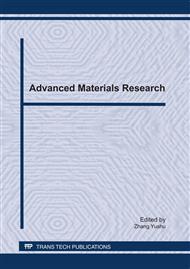p.344
p.349
p.354
p.358
p.363
p.369
p.374
p.378
p.383
Resolution and Analysis for Quasi-Stable Frost Forming Model
Abstract:
The quasi-stable state model of one-dimension frost forming process is introduced and solved using numerical methods. The effect of the velocity and relative humidity of wet air and the temperature of the cold surface on frost forming process is discussed in length. The calculation results indicate that interfacial and inner sublimation jointly contribute to frost forming process. Higher velocity, higher relative humidity and lower the cold surface temperature correspond faster frosting. There is a critical point on the increment of frost density, after which deeper frosting dose not necessarily lead to acceleration of heat transfer deterioration therein.
Info:
Periodical:
Pages:
363-368
Citation:
Online since:
February 2011
Authors:
Keywords:
Price:
Сopyright:
© 2011 Trans Tech Publications Ltd. All Rights Reserved
Share:
Citation:


